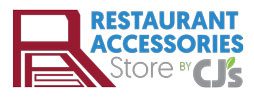Comprehensive Guide to Restaurant Fire Prevention and Response
Fire safety is a critical concern for any restaurant owner or manager. The combination of high heat, open flames, and flammable materials in a busy kitchen environment creates a significant risk of fire. To protect your staff, customers, and property, it’s essential to have a comprehensive fire prevention and response plan in place. In this guide, we’ll cover the key strategies for minimizing fire risks and responding effectively in emergency situations.
The Importance of Staff Training
One of the most crucial aspects of restaurant fire safety is ensuring that all staff members are thoroughly trained in fire prevention and response procedures. Regular training sessions should cover topics such as identifying potential fire hazards, proper use of fire extinguishers, and evacuation protocols. By equipping your team with the knowledge and skills to prevent and respond to fires, you can significantly reduce the risk of a catastrophic event.
In addition to initial training, it’s important to conduct periodic fire drills to reinforce the procedures and ensure that everyone knows their role in an emergency. Consider using high-quality training materials, such as instructional videos and interactive exercises, to engage your staff and improve retention of the information. Remember, a well-prepared team is your first line of defense against restaurant fires.
Maintaining Equipment and Electrical Systems
Another key aspect of fire prevention in restaurants is regular maintenance of cooking equipment and electrical systems. Grease buildup in exhaust hoods, ducts, and fans is a common cause of restaurant fires, so it’s essential to have these components cleaned and inspected on a regular basis. Consider investing in high-quality grease containment systems to help manage this risk.
Electrical fires are another major concern in restaurants. Ensure that all electrical equipment, wiring, and outlets are up to code and in good working condition. Regularly inspect cords and plugs for signs of wear or damage, and replace them as needed. By staying on top of equipment and electrical maintenance, you can significantly reduce the risk of fires in your restaurant.
Fire Suppression Systems and Extinguishers
Installing automatic fire suppression systems in your restaurant kitchen is a smart investment in fire safety. These systems are designed to detect and extinguish fires quickly, minimizing damage and downtime. When selecting a fire suppression system, work with a reputable provider who can help you choose the right type and size for your specific needs.
In addition to automatic suppression systems, it’s crucial to have the right type and number of fire extinguishers readily available throughout your restaurant. Different types of fires require different types of extinguishers, so make sure you have the appropriate class of extinguisher for each area of your establishment. Train your staff on the proper use of fire extinguishers and make sure they know the location of each unit.
Keeping the Kitchen Clean
A clean kitchen is a safer kitchen when it comes to fire prevention. Grease, oil, and other flammable residues can quickly accumulate on surfaces, increasing the risk of a fire. Establish a regular cleaning schedule for your kitchen, including deep cleaning of exhaust systems, fryers, and other equipment. Use high-quality cleaning chemicals and cleaning accessories to ensure thorough and effective cleaning.
In addition to regular cleaning, encourage your staff to maintain a clean and organized work environment throughout their shifts. Promptly clean up spills, dispose of grease-soaked rags in covered metal containers, and keep flammable materials away from heat sources. By fostering a culture of cleanliness and safety, you can greatly reduce the risk of kitchen fires.
Compliance with Fire Safety Codes
Finally, it’s essential to ensure that your restaurant is in compliance with all local fire safety codes and regulations. These requirements cover everything from the placement of fire extinguishers to the maintenance of exit routes. Familiarize yourself with the specific codes that apply to your restaurant and work with your local fire department to ensure compliance.
Regular fire safety inspections can help identify potential issues before they become serious problems. Be proactive in addressing any deficiencies noted during these inspections, and maintain detailed records of your compliance efforts. By staying on top of fire safety regulations, you can protect your business and demonstrate your commitment to the safety of your staff and customers.
Conclusion
Fire prevention and response planning are critical components of running a safe and successful restaurant. By prioritizing staff training, equipment maintenance, fire suppression systems, kitchen cleanliness, and code compliance, you can significantly reduce the risk of a devastating fire. Remember, investing in fire safety is an investment in the long-term success and resilience of your business.
For more information on restaurant fire safety products and solutions, visit Restaurant Accessories Store by CJ’s. Our wide selection of high-quality products can help you create a safer, more efficient restaurant environment.

